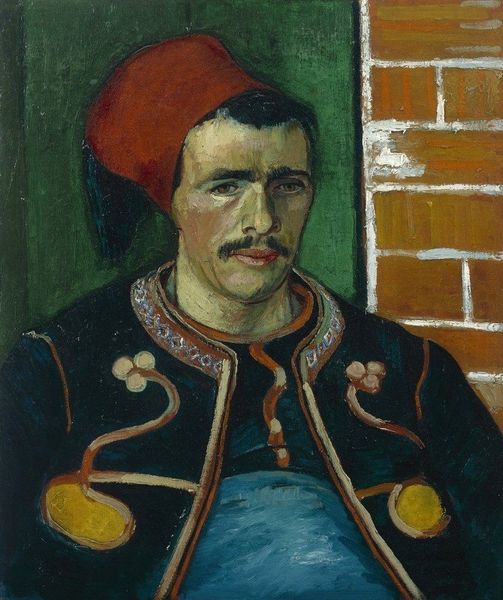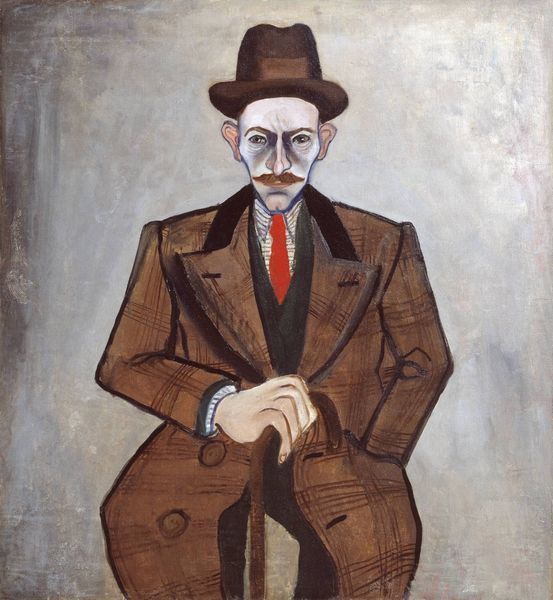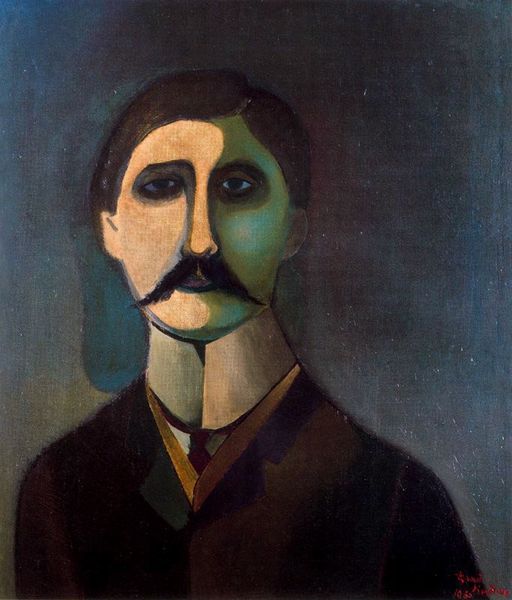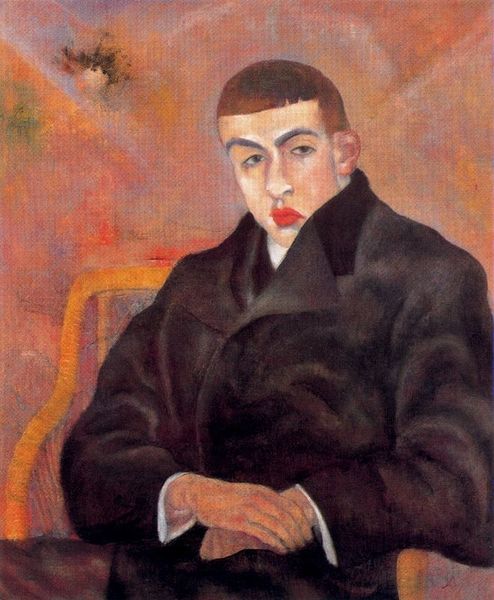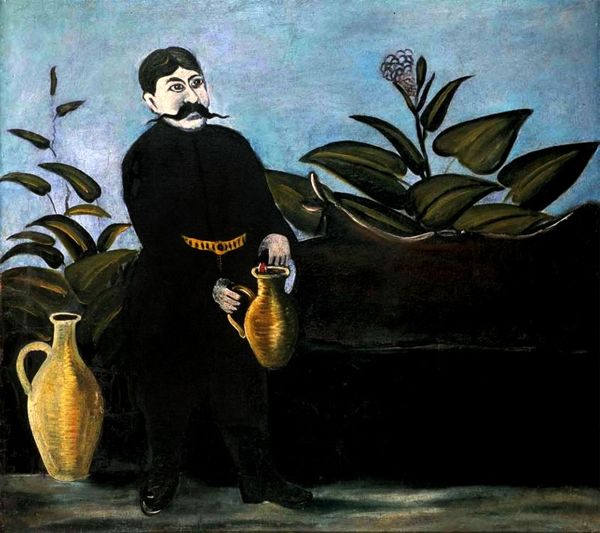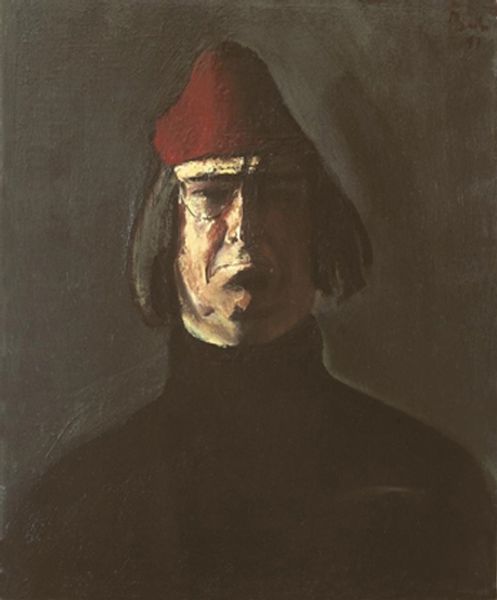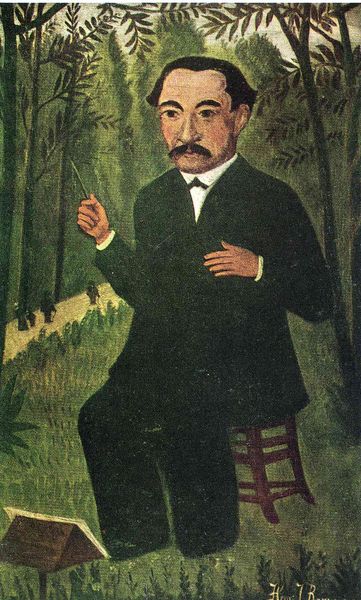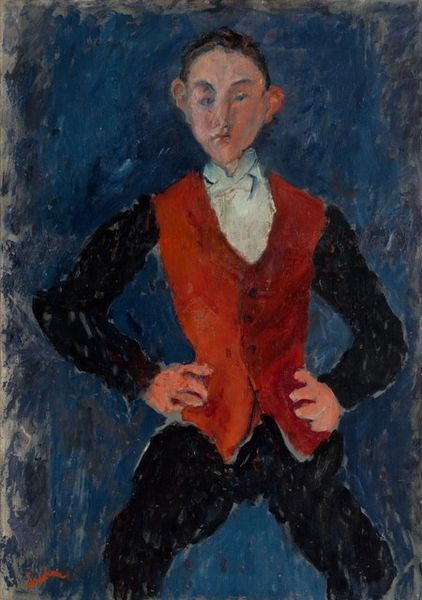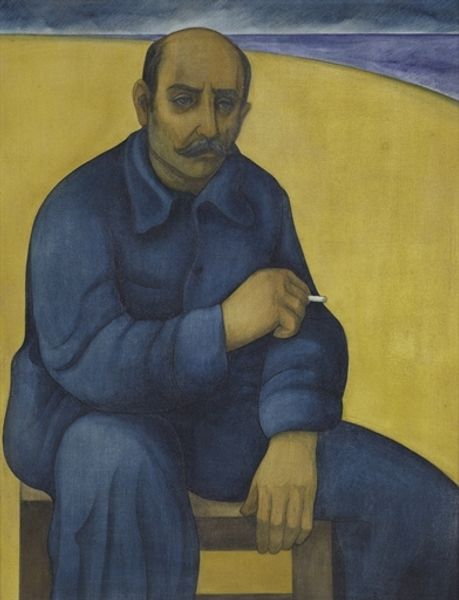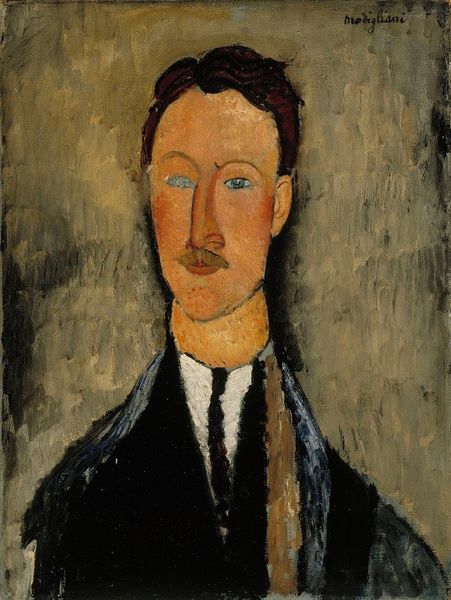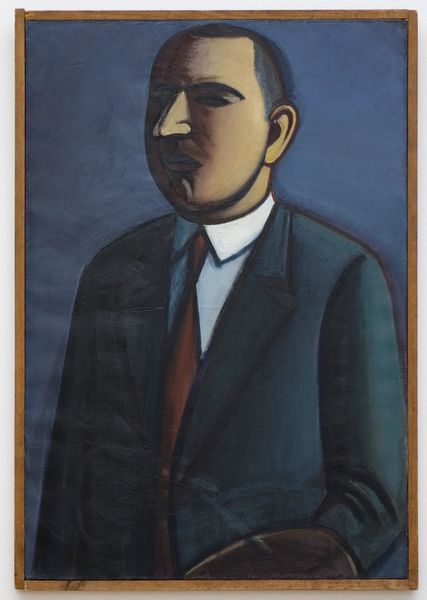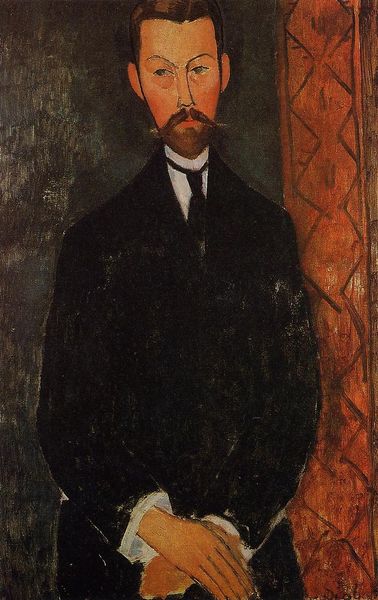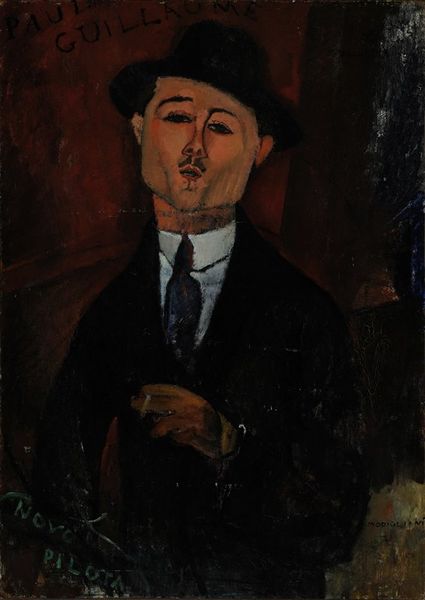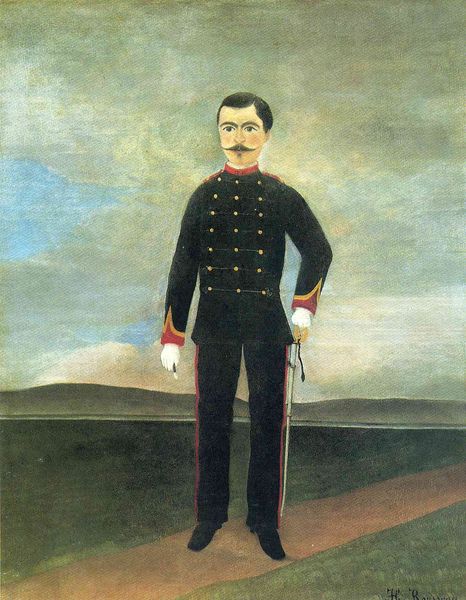
Portrait of Alexander Garanov 1906
0:00
0:00
nikopirosmani
Art Museum of Georgia (AMG), Tbilisi, Georgia
painting
#
portrait
#
painting
#
figuration
#
symbolism
#
genre-painting
#
realism
Dimensions: 109 x 90 cm
Copyright: Public domain
Curator: Here we have Niko Pirosmani's "Portrait of Alexander Garanov," painted in 1906. Editor: It's certainly striking. The flatness, the simplified forms… it projects such a direct and somewhat austere presence. The color palette is subdued, relying heavily on that matte black and the chalky blue. Curator: Indeed. Consider the context. Pirosmani was a self-taught artist, working outside the academic traditions of his time. His directness wasn't naiveté, but a deliberate aesthetic choice reflective of his environment and patronage. These were often tavern owners, shopkeepers – the rising merchant class in Tbilisi. Editor: Right, but there's also a sophisticated sensibility in how he balances the composition. Note how Garanov’s dark silhouette contrasts against the light blue background, a tension underscored by the precise placement of the houseplant on the left and the suggestive presence of outdoor shrubbery on the right. He commands the space! Curator: I agree. That spatial tension emphasizes Garanov's role as an emerging figure within Tbilisi society, showcasing the new, confident bourgeoise. That distinctive garb, part traditional Georgian dress and partly a dandy's flair, also hints at social aspiration. It isn't simply a realistic rendering; there's a social message conveyed through these carefully selected details. Editor: Precisely! And the gold accents—the belt, rings, the chain with what seems like a medal—inject flashes of opulence that disrupt the overall austerity. It shows an attention to materialism without getting lost in realism. They become critical visual keys for grasping the painting. Curator: Moreover, that very specific blue used for the background and visible ground beneath, speaks to an innovative, subtle form of color theory and abstract representation, where flat surfaces work to create atmospheric perspective. A brilliant example of how local settings and conditions produce radical visual expression. Editor: This piece is a reminder that seemingly simple artworks can harbor a wealth of information about a specific time, place, and individual. It pushes us to look beyond the immediate and explore how these formal elements connect to a broader historical reality. Curator: Ultimately, Pirosmani gives us both the man and his world in a single, powerful image.
Comments
No comments
Be the first to comment and join the conversation on the ultimate creative platform.
